Get HotMacNews- iOS App and Homepage
To access HotMacNews on your computer Click Here (It makes a great Home Page)
To download iPhone or iPad app (HotMacNews2) click here HotMacNews2
**Once in HotMacNews Home Page click on Preferences to customize to your needs.
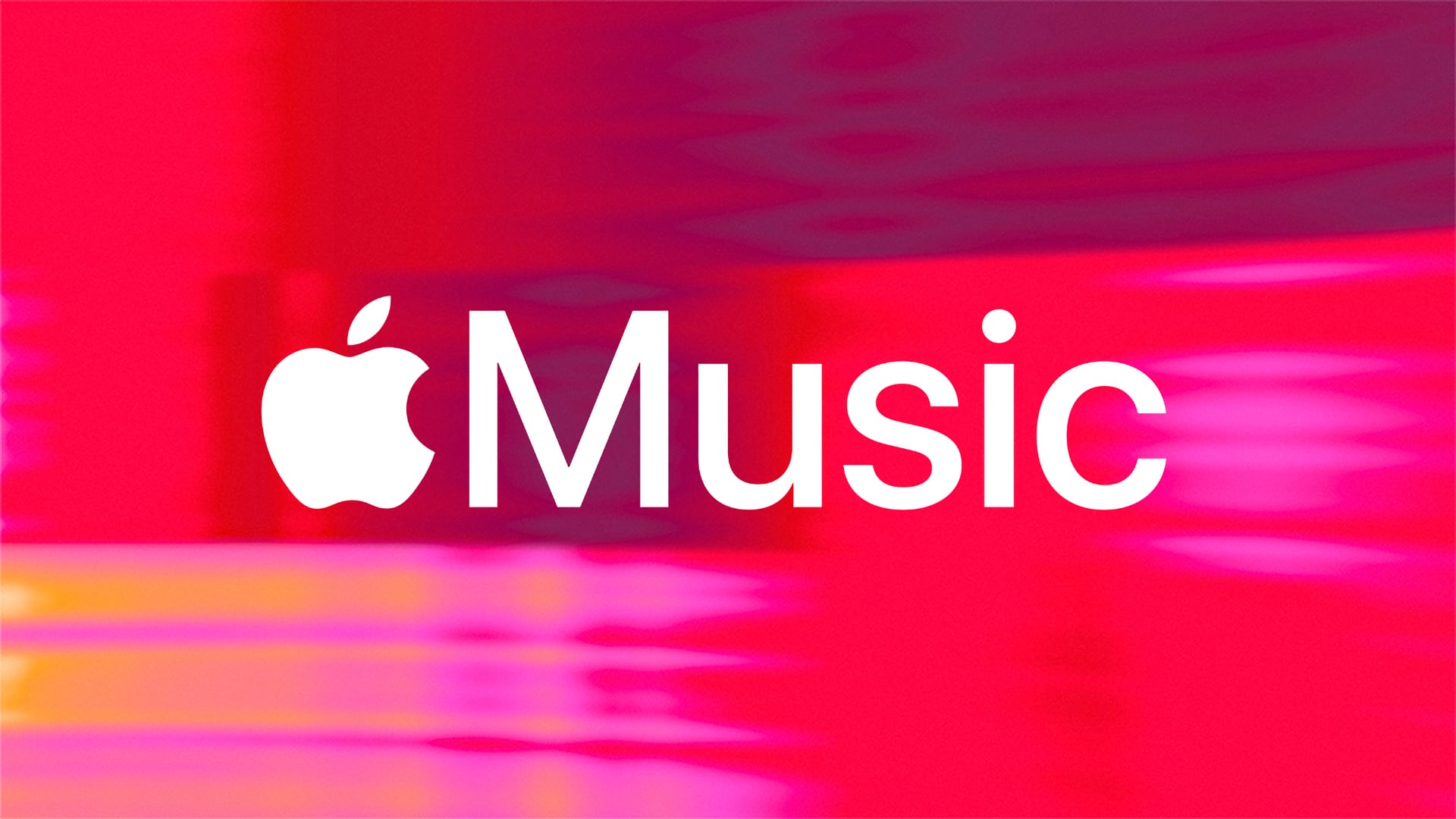
Learn how to configure settings in the Apple Music app on Windows to download and listen to compatible songs in spatial audio on your PC.
Apple Music for Windows was updated on April 3, 2025, with support for Dolby Atmos surround sound technology. As a result, Windows PC owners can now enjoy Dolby Atmos songs on Apple Music in spatial audio, which creates a three-dimensional listening experience, on compatible devices like AirPods.
Apple Music for Windows v1.1284.20225 or later is required for Dolby Atmos and spatial audio. The latest version is available for download in the Microsoft Store. Follow the steps below to turn on the option to stream and download Dolby Atmos versions of Apple Music songs on your Windows PC.
How to play Dolby Atmos songs in Apple Music on Windows
Before you can play Dolby Atmos-supported songs in spatial audio on your PC in the Apple Music app, you must first turn on this option because it’s off by default. Click the … (ellipsis) menu at the top of the sidebar and choose “Settings,” then click the “Playback” section and choose an option from the “Dolby Atmos” menu. The “Automatic” option ensures you’ll always hear compatible tracks in Dolby Atmos spatial audio. For wired headphones, set this option to “Always On” instead.
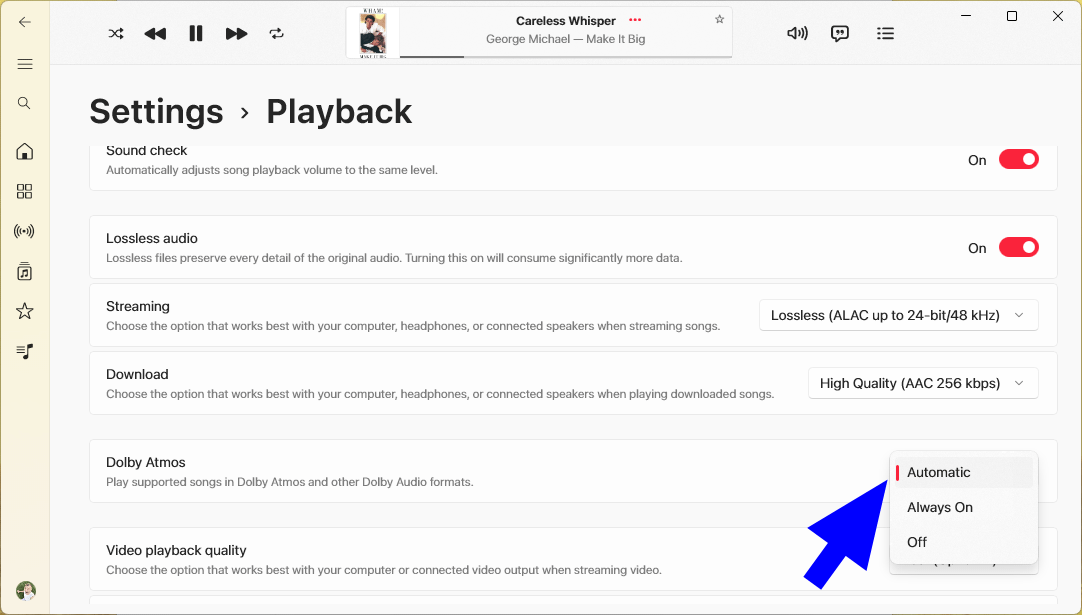
To toggle spatial audio when a song is streaming, hit the Dolby Atmos icon in the playback controls and choose “Audio Quality Settings” to open the settings and switch on the “Dolby Atmos” option. Doing so will prompt the Music app to stop playing the spatial audio version of the track and stream a stereo version instead.
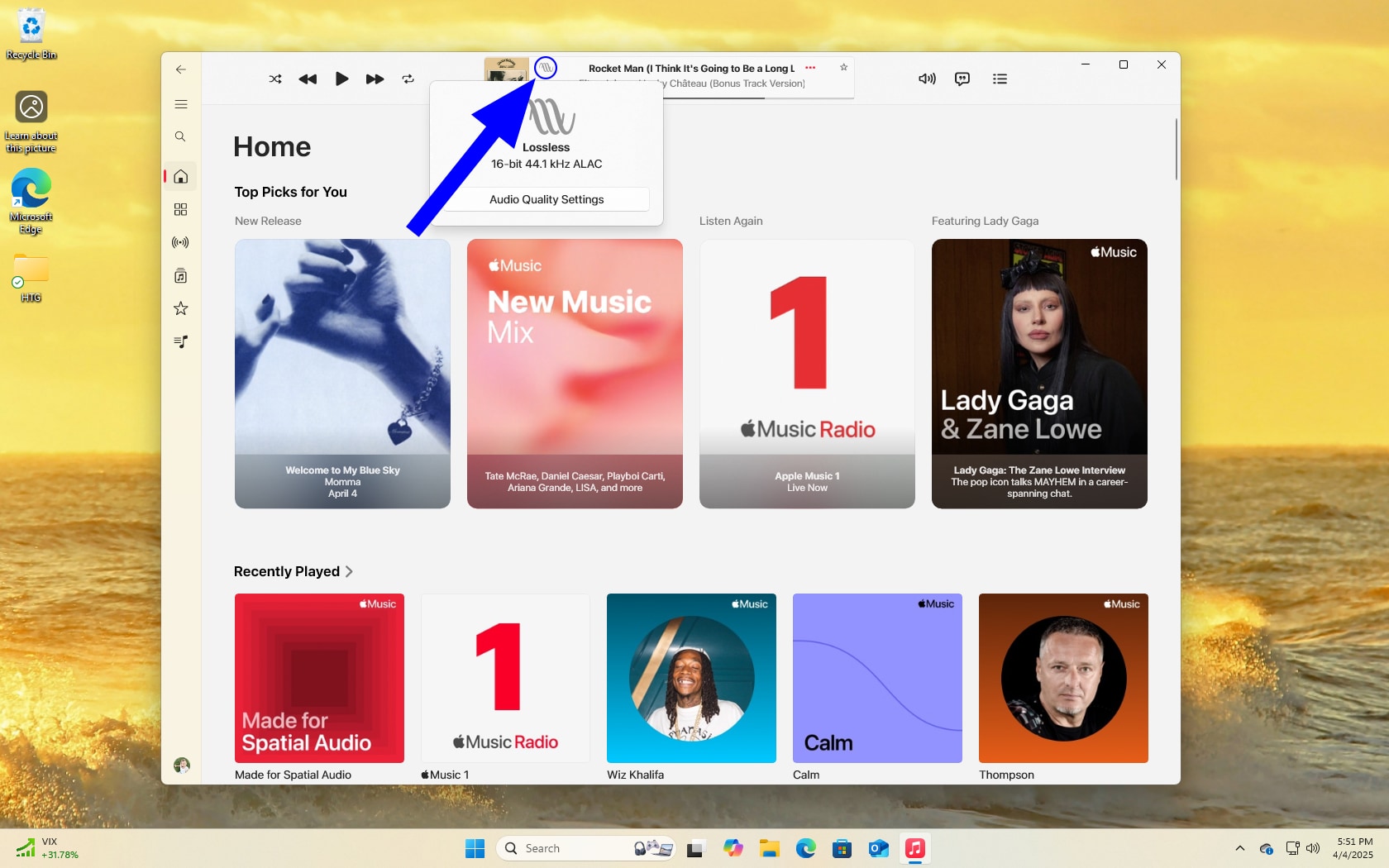
Do Dolby Atmos tracks sound quieter than their stereo counterparts? If so, then be sure to turn on the Sound Check option in the in-app settings.
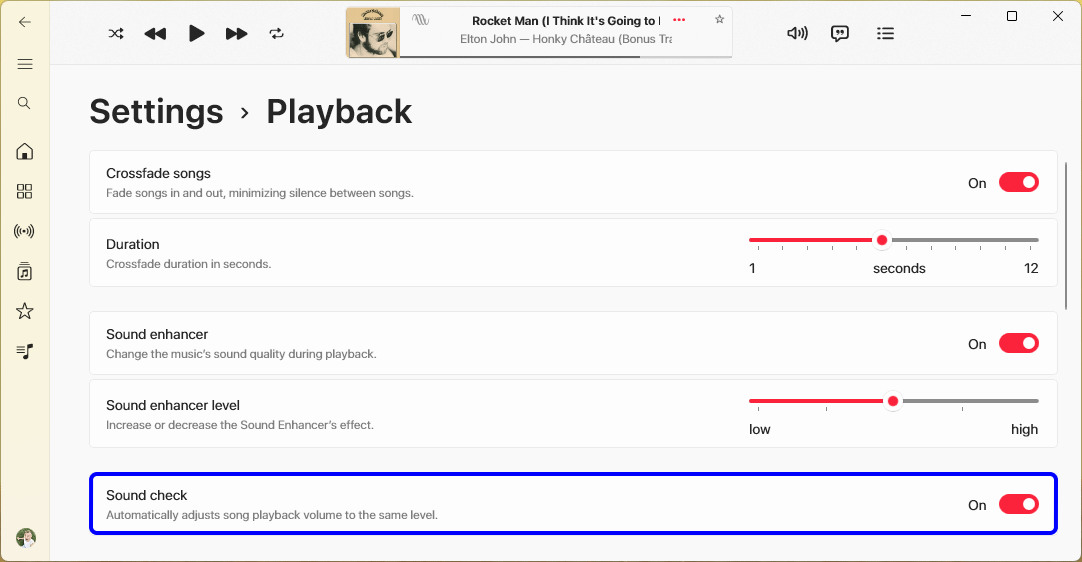
Set Apple Music downloads to Dolby Atmos on Windows
By default, Apple Music downloads songs for offline listening in the stereo format. To download songs in Dolby Atmos instead, if available, click the … (ellipsis) menu at the top of the sidebar and choose “Settings,” then click the “General” section and set “Download Dolby Atmos” to “On”.
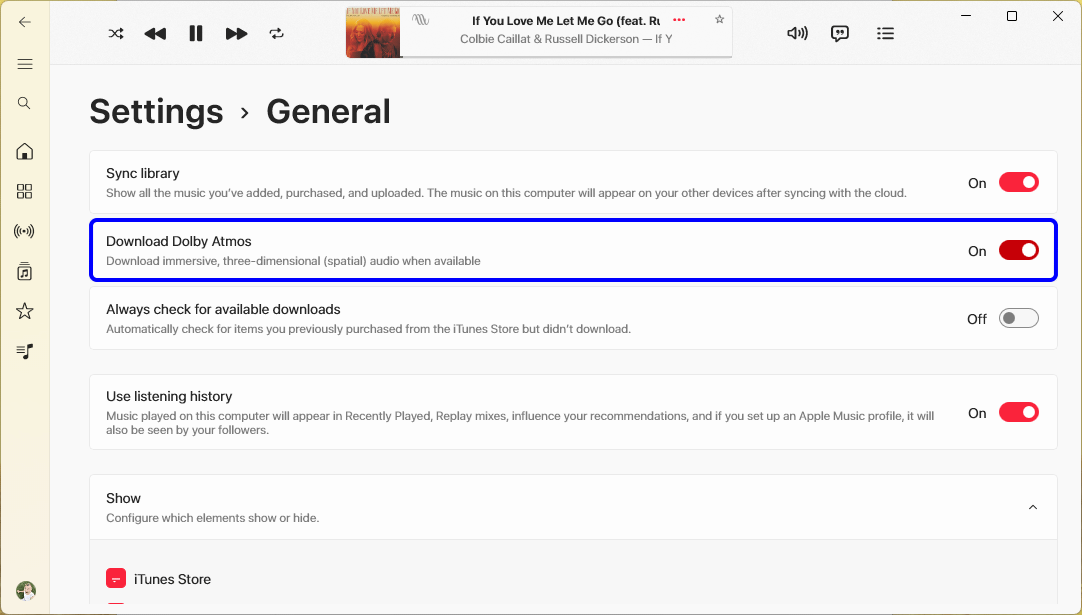
You’ll now get new downloads in the Dolby Atmos format. To get a Dolby Atmos version of an already downloaded song, delete the song in your library and redownload it. “When you download a Dolby Atmos version of a song, a stereo version of the song is downloaded too,” explains Apple. “To listen to the stereo version of a song, just turn off Dolby Atmos in settings, then play the song.”
Does that Apple Music song play in spatial audio?
Spatial audio is not available for the entire Apple Music catalog. Look for the Dolby Atmos badge in the playback controls and on Apple Music song and album pages to know whether a specific track or album can be played in spatial audio.

You can also search for “spatial audio” in the Apple Music app to surface curated playlists by Apple editor that showcase spatial audio tracks.
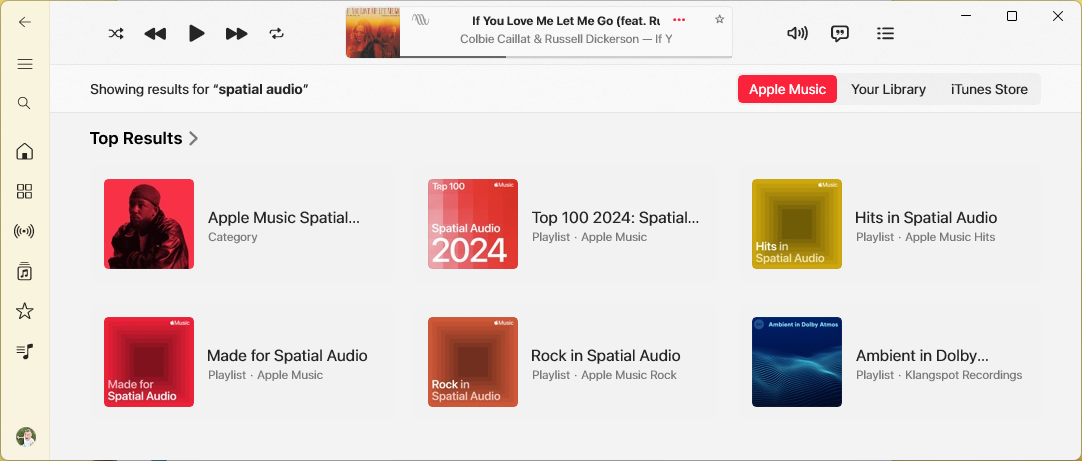
Dolby Atmos doesn’t just work; studio technicians must use specialized software to position each 3D audio object in three-dimensional space, adding panning information and so forth to create a multi-channel mix. “Some songs are available in Dolby Atmos only on a particular version of an album,” says Apple.
What is Dolby Atmos? How does spatial audio work?
Dolby Atmos is a spatial audio technology developed by Dolby Laboratories which provides an immersive sound experience. It adds height channels and treats audio as objects that can be precisely placed within a 3D space thanks to panning metadata. Decoding Dolby Atmos leverages audio effects and computational audio to mix the multi-channel source material to match the user’s installed speaker configuration.
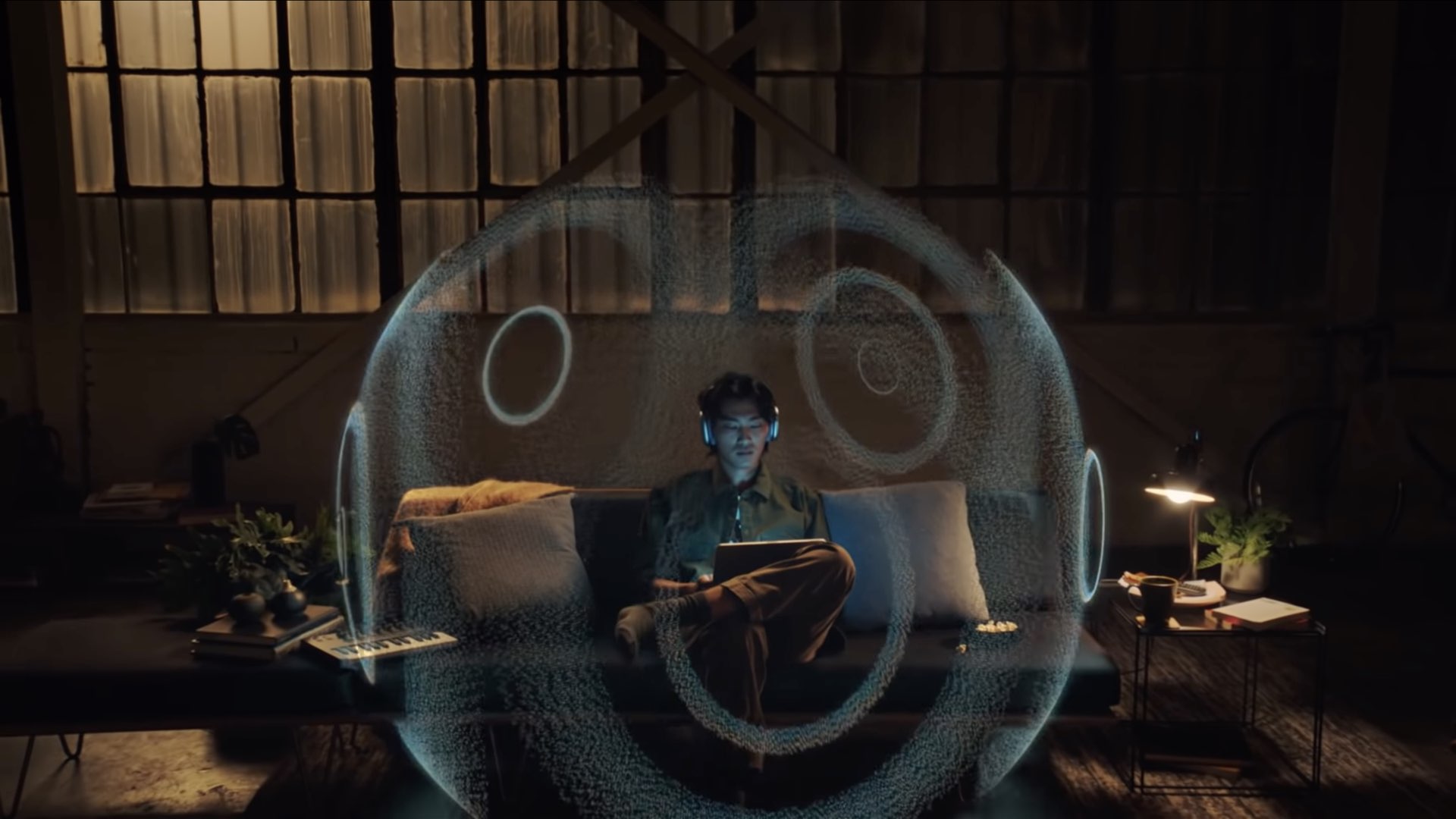
Apple Music on Apple’s platforms and Android has supported Dolby Atmos since 2021. Many streaming services support Dolby Atmos as well, including Amazon Prime Video, Max, Netflix, Apple TV+ and Disney+. Spatial audio on Apple’s devices is basically an algorithm that renders spatial audio from a stereo or multi-channel source, creating a faux 3D soundscape that fools you into believing the sound is coming all around you—even on stereo speakers or headphones.
Spatial audio with Dolby Atmos: Device compatibility list
Spatial audio with Dolby Atmos on Apple Music works on the following devices:
- iPhone XS or later (except the iPhone SE)
- 12.9-inch iPad Pro (third-generation or later)
- 11-inch iPad Pro
- iPad Air (fourth-generation or later)
- Mac (Apple silicon)
- Vision Pro
- Android phones and tablets
- Apple TV using any HomePod model as the default speaker; a Dolby Atmos-compatible sound bar, AV receiver, TV set or any Apple or Beats Bluetooth headphones
- Windows PC with compatible hardware to play music in Dolby Atmos audio formats and the Dolby Access app.
Spatial audio via Dolby Atmos also works on these headphones:
- AirPods Max
- AirPods 3 or later
- AirPods Pro and later
- Beats Fit Pro
- Beats Solo 4
- Beats Studio Pro
- Powerbeats Pro 2
Peruse Apple’s support page to check if Dolby Atmos and spatial audio on Apple Music are available in your country or region.
Source link: https://www.idownloadblog.com/2025/04/04/apple-music-spatial-audio-windows-dolby-atmos-play-songs-change-settings-tutorial/
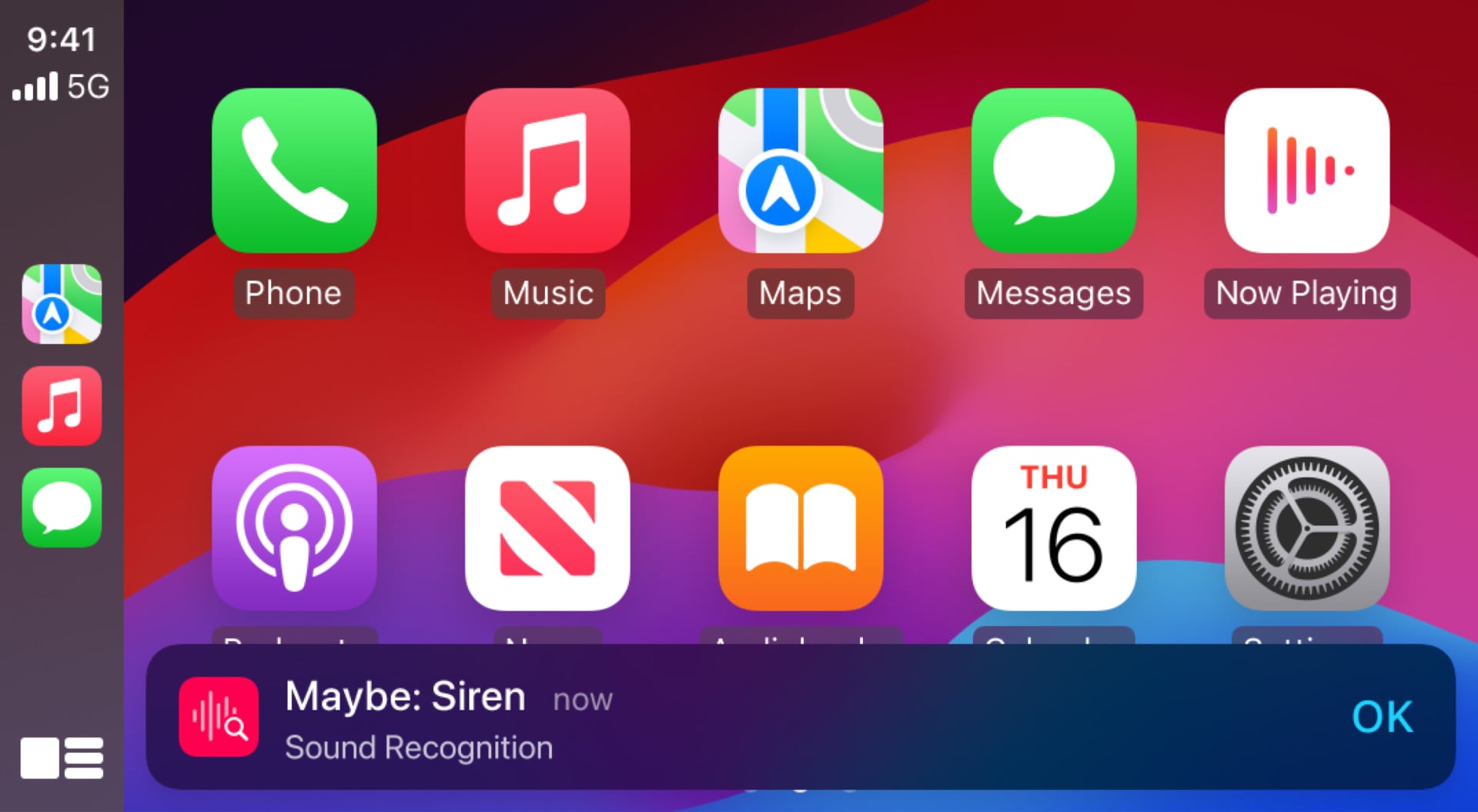
Wireless CarPlay in iOS 18.4 is causing some drivers connection issues, but you can try these workarounds until Apple releases a proper fix to address the problem.
Complaints on Reddit and X (Twitter) reveal connection problems with wireless CarPlay for an unknown number of iPhone owners who installed iOS 18.4. Complaints range from CarPlay stuck in a reconnect loop, to not connecting at all to disconnecting intermittently. For one guy, CarPlay disconnects when invoking Siri.
Apple does not publicly comment on complaints on social media but you can contact the company’s support department if you’re having this problem. CarPlay issues typically occur after an iOS update before they’re fixed in subsequent releases.
Apple is currently testing an iOS 18.5 update, but the current beta version doesn’t contain a fix for CarPlay’s connection issues. The bug makes CarPlay unusable in the car, so hopefully Apple will prioritize a fix in the next update to iOS 18.
iOS 18.4 is causing CarPlay to disconnect and reconnect
When CarPlay is disconnected, the vehicle is no longer displayed in the CarPlay settings and the driver may see a message saying “The connection failed. Please check whether your mobile device is unlocked.” Some customers reported having this issue on their aftermarket CarPlay receiver. The following vehicles that integrate CarPlay’s instrument cluster are also affected:
- Audi S3 (2023)
- Nissan Frontier (2023)
- Honda Civic Hybrid (2025)
- Mazda CX-30 (2025)
AppleInsider readers have long reported various CarPlay problems before, so the latest issue won’t be a surprise to CarPlay fans. I’m just speculating, but CarPlay’s connection issues may have something to do with the fact that iOS 18.4 added a third row of icons to CarPlay, depending on the size of the car’s infotainment display.
Workarounds for CarPlay connection issues
There were no patches for CarPlay’s connection issues at post time. That said, you can mitigate the problem until a proper fix arrives by going back to the god ol’ wired USB connection. Another trick: visit parental controls in Settings > Screen Time > Content & Privacy Restrictions and turn on “CarPlay” in the “Allowed Apps” section. The poster who said this solution worked for them speculated that Screen Time might be enforcing Do Not Disturb settings during normal use hours.
Resetting the car or the phone won’t fix the issue and neither will reconnecting Bluetooth, performing a network reset or repairing the phone. However, several people claim that CarPlay eventually connected for them after trying several times.
Other issues in iOS 18.4
An unrelated bug is causing iOS 18.4’s CarPlay to remove song information from the Now Playing screen. It’s unclear whether this problem is related to CarPlay’s newly-introduced support for sports apps where the Now Playing interface splits to show scores for each side. Yet another bug in iOS 18.4 is causing long forgotten, previously deleted iPhone apps to reinstall and appear on the Home Screen.
Source link: https://www.idownloadblog.com/2025/04/04/apple-ios-18-4-bug-carplay-connection-issues-workarounds/
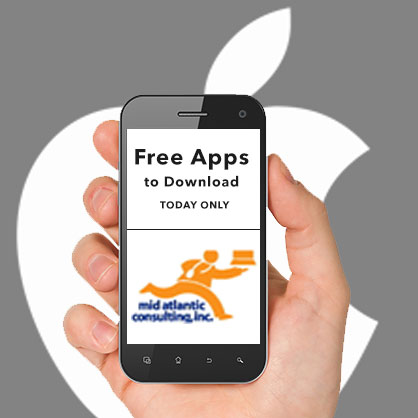
Habit Tracker – Productify , Color Analysis – StyleIt AI , Audio Extractor ™ and more
iPhone:
![]() Habit Tracker – Productify ( $24.99 → Free ) DEDUCTIFY, LLC
Habit Tracker – Productify is your personal habit assistant. Select from one of the sample habits or create your own. You’re able to count the streaks of each habit and track your overall progress. The app is simple and intuitive but don’t let that fool you, it’s also a powerful motivator.
Habit Tracker – Productify ( $24.99 → Free ) DEDUCTIFY, LLC
Habit Tracker – Productify is your personal habit assistant. Select from one of the sample habits or create your own. You’re able to count the streaks of each habit and track your overall progress. The app is simple and intuitive but don’t let that fool you, it’s also a powerful motivator.
![]() Swipe Delete Photos – Unroller ( $44.99 → Free ) Mohamed Makled Delete & Clean Photos Unroller helps you organize your memories and keep only the best ones. Get rid of duplicates, blurry shots, and unnecessary screenshots. You can filter photos by albums, months, or categories.
Swipe Delete Photos – Unroller ( $44.99 → Free ) Mohamed Makled Delete & Clean Photos Unroller helps you organize your memories and keep only the best ones. Get rid of duplicates, blurry shots, and unnecessary screenshots. You can filter photos by albums, months, or categories.
![]() 75 Day Hard & Soft Challenge ( $49.99 → Free ) Lumos apps 75 day hard & Soft Challenge is the ultimate tool for building fitness and mental habits. Whether you’re a dedicated goal-setter or just beginning your personal development journey, this app makes it all possible.
75 Day Hard & Soft Challenge ( $49.99 → Free ) Lumos apps 75 day hard & Soft Challenge is the ultimate tool for building fitness and mental habits. Whether you’re a dedicated goal-setter or just beginning your personal development journey, this app makes it all possible.
![]() Seek: Guided Meditation & Yoga ( $99.99 → Free ) Seeker Minds Private Limited Seek: Guided Meditation & Yoga has daily live classes and courses to help you on your journey to mental wellness through meditation.
Seek: Guided Meditation & Yoga ( $99.99 → Free ) Seeker Minds Private Limited Seek: Guided Meditation & Yoga has daily live classes and courses to help you on your journey to mental wellness through meditation.
![]() Color Analysis – StyleIt AI ( $39.99 → Free ) Het Thummar Color Analysis – StyleIt AI is your personal digital color consultant. Discover what shades and colors look best on you regardless of the season. The app lets you experiment with your color palette before you commit to buying hundred of dollars in clothes.
Color Analysis – StyleIt AI ( $39.99 → Free ) Het Thummar Color Analysis – StyleIt AI is your personal digital color consultant. Discover what shades and colors look best on you regardless of the season. The app lets you experiment with your color palette before you commit to buying hundred of dollars in clothes.
![]() Audio Extractor ™ ( $39.99 → Free ) Andy Sutanto Audio Extractor offers an easy way to extract audio from your videos. All you have to do is select a video file and the app will handle the rest. The app works offline, so no internet connection is needed.
Audio Extractor ™ ( $39.99 → Free ) Andy Sutanto Audio Extractor offers an easy way to extract audio from your videos. All you have to do is select a video file and the app will handle the rest. The app works offline, so no internet connection is needed.
![]() Sips – Cocktail Craft ( $44.99 → Free ) Alp Avanoglu Sips – Cocktail Craft is a fresh app for all things cocktail. The app is packed with fine tuned recipes and a frequently updated menu. You can explore a wide variety of cocktail recipes or add your own.
Sips – Cocktail Craft ( $44.99 → Free ) Alp Avanoglu Sips – Cocktail Craft is a fresh app for all things cocktail. The app is packed with fine tuned recipes and a frequently updated menu. You can explore a wide variety of cocktail recipes or add your own.
Source link: http://appadvice.com/apps-gone-free
iOS 18.5 brings new Mail toggles for contact photos and message grouping by sender without leaving the app
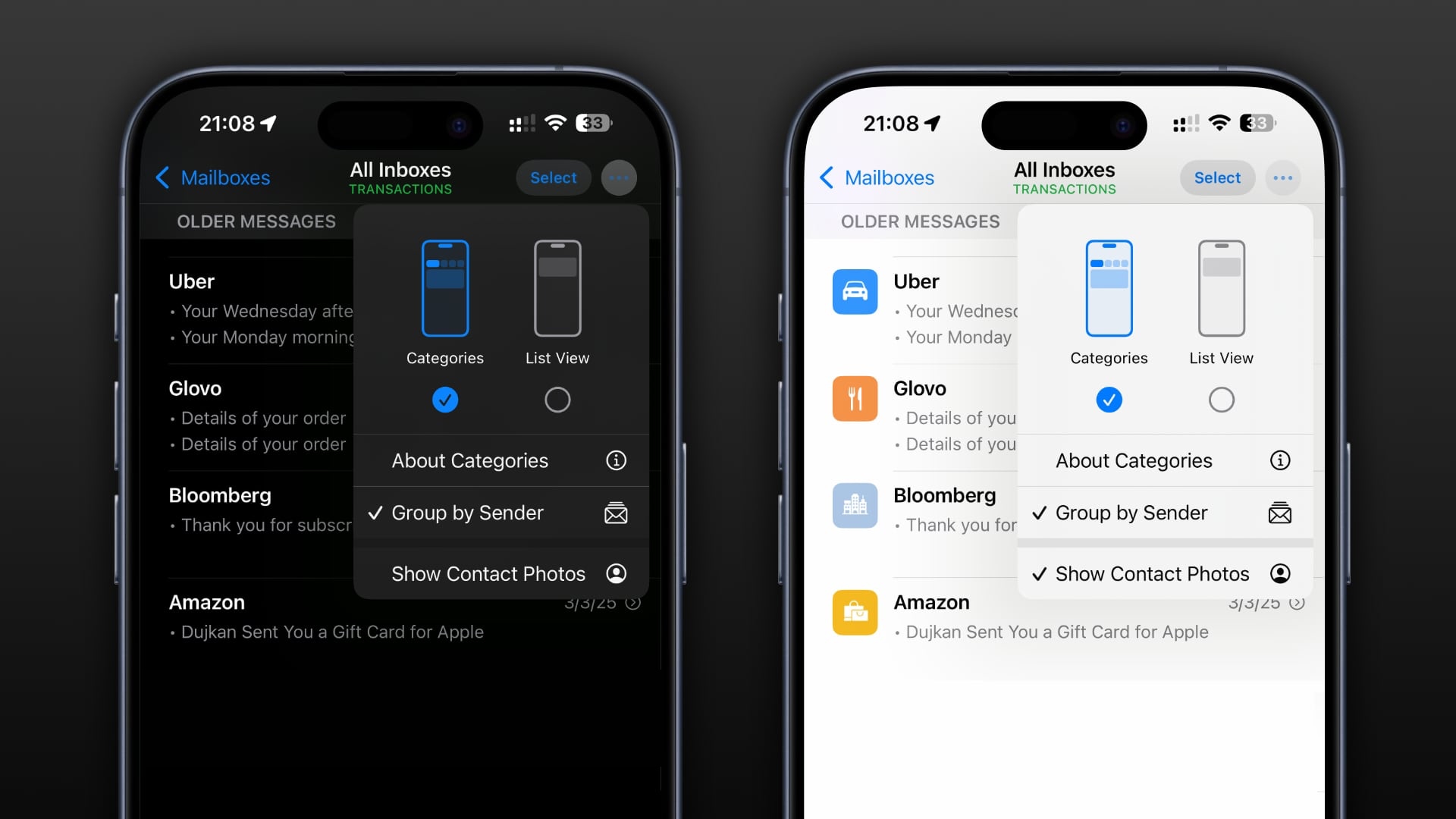
Apple’s iOS 18.5 and iPadOS 18.5 software updates let you turn off contact photos in the built-in Mail app on your iPhone and iPad with fewer clicks than before.
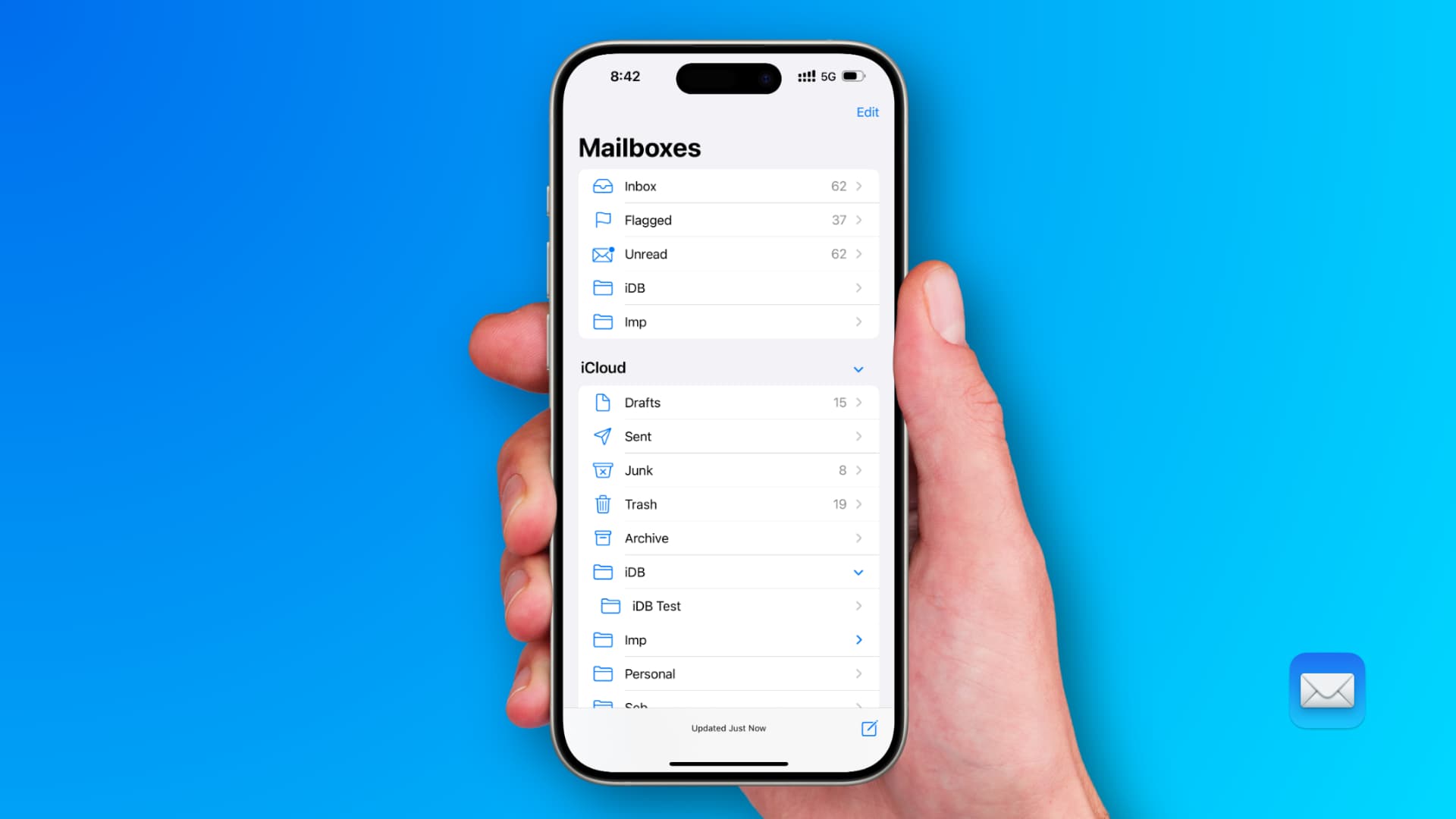
Apple revamped Mail app on the iPhone, iPad and Mac in iOS 18.2, iPadOS 18.4 and macOS Sequoia 15.4 includes new capabilities such as automatic message categorization and visual changes like contact photos in the inbox.
Turned on by default, the setting can be turned off in the Mail app settings, which requires multiple steps. With iOS 18.5 and iPadOS 18.5, however, Apple brought a new way to toggle people’s pictures that only requires two taps. The same is true for the message grouping option, which is now also available within the app just two taps away.
Apple is currently testing the updates with its developers; the general public will be able to take advantage of this new setting when iOS 18.5 is released in a few weeks.
iOS 18.5 lets you toggle Mail contact photos and grouping by sender without leaving the app
To toggle contact photos in iOS 18.5’s Mail app, hit the three-dotted menu in the top-right corner and tick or untick the “Show Contacts Photos” option. This handy menu is part of the Mail app’s redesign and includes other options, like toggling the Priority Messages feature of Apple Intelligence and switching between standard list view and categories like Primary, Transactions, Updates and Promotions.
9to5Mac explains that you could toggle contact images before, but you had to open the Settings app, scroll to the bottom, choose the “Apps” option, select “Mail” in the list of installed apps and toggle “Show Contact Photos” in the “Message List” section. The setting is still present there, but iOS and iPadOS 18.5 give you a new, much faster way to toggle contact photos on the fly, without leaving the app.
The Mac version of the Mail app already supports showing or hiding contact photos by clicking View > Show Contact Photo in the menu. The Mail app uses people’s pictures from the built-in Contacts app to show on the left side of each message in your inbox, similar to the Messages app.
These images are not sent with your email messages, but some people deem them a total waste of screen real estate. This is an issue on small devices such as phones, but not a biggie on Macs. What I don’t like are the cheesy generic images for businesses that don’t participate in Apple’s Business Connect program and therefore don’t provide official company logos for the Mail app.
Source link: https://www.idownloadblog.com/2025/04/03/ios-18-5-iphone-mail-contact-photos-new-in-app-toggle/
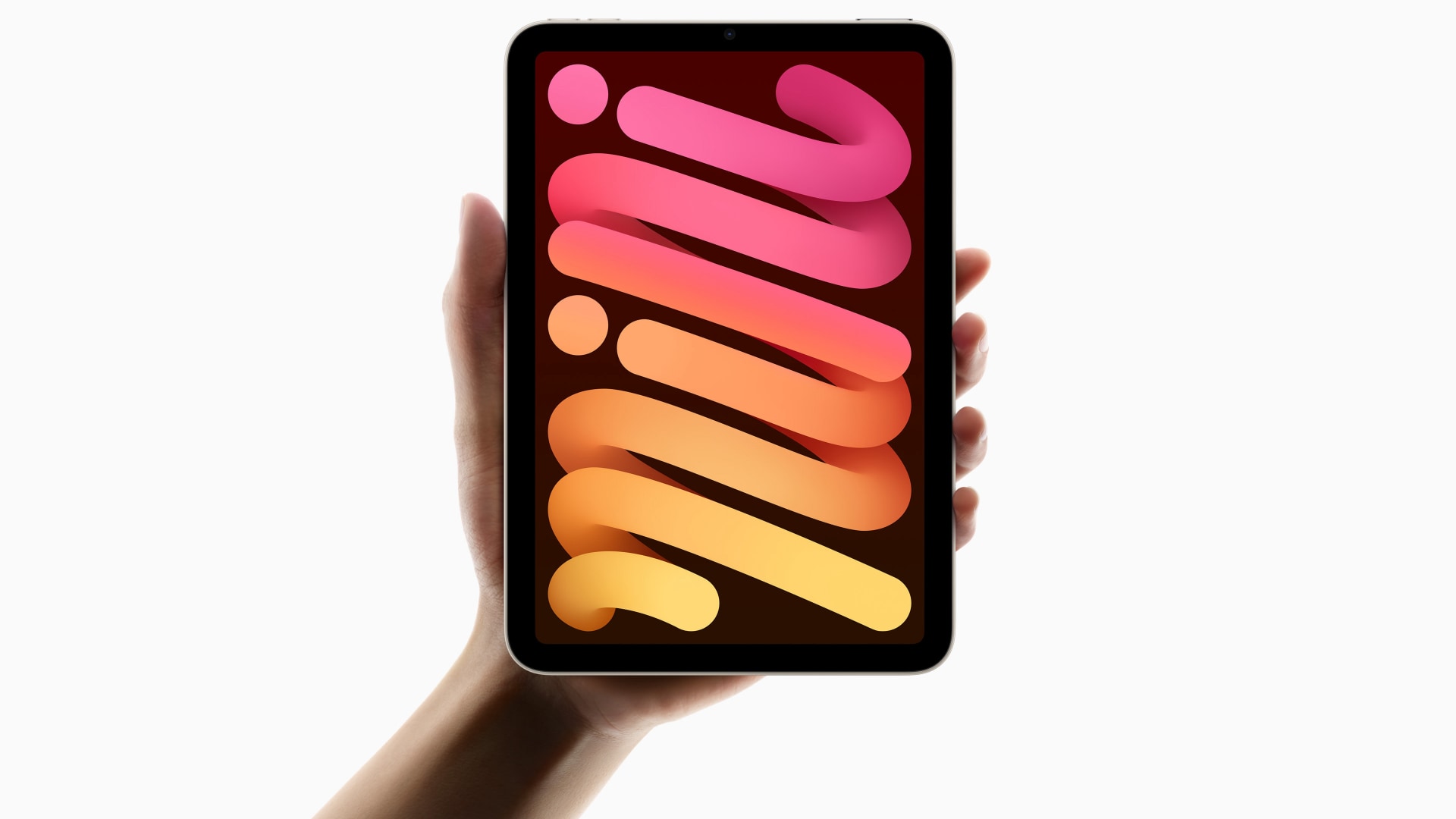
Apple is allegedly evaluating a new OLED display for the next iPad mini, but it’s unclear whether the tablet will drop this fall or in 2026.
We don’t know which iPad models Apple will decide to equip with OLED panels next following the current iPad Pro, which debuted a tandem OLED design with two OLED panels in May 2024. Since then, no other iPads have switched to OLED.
MacRumors highlighted a Weibo post by Digital Chat Station, a Chinese leaker with sources in Apple’s supply chain, claiming that Samsung’s display-making arm will produce OLED panels for the next iPad mini. The leaker claims Apple is currently “evaluating” a small-sized OLED display for the device.
The next iPad mini should get an OLED display.
It’s unclear whether an iPad mini featuring OLED will arrive this year or in 2026. For context, the current seventh-generation model was released in October 2024.
For what it’s worth, analyst firm Display Supply Chain Consultants claimed in December 2024 that Apple was working to expand OLED to additional iPads, including an OLED iPad mini expected to launch in 2026. It also predicted that the next iPad Air, expected in 2027, will get OLED, too.
A May 2024 report claimed Samsung Display had begun developing sample 8-inch OLED panels for the next iPad mini, with plans to mass produce them at its facility in Cheonan in the second half of 2025. However, the first iPad mini and iPad Air models with OLED won’t arrive before 2026, the report added.
Apple devices with OLED displays
The only Apple devices with OLED as of right now are the iPhone, Apple Watch and iPad Pro. With OLED, there’s no backlight as the technology emits light through each pixel, so the display can be thinner. The iPad Pro is the thinnest device Apple has built to date because it ditched the previous mini-LED backlight for OLED. Aside from a thinner display assembly, other OLED benefits include deeper blacks, more vibrant colors, enhanced HDR, increased contrast and higher resolutions.
The next iPad mini is likely to use a single OLED panel, as opposed to the iPad Pro’s tandem OLED comprising two-stack OLED panels. As a result, the device certainly won’t match the brightness of the iPad Pro’s display which can go to 1000 nits max full screen brightness or 1600 nits peak brightness for HDR content only.
The next iPad Pro may lack ProMotion, Apple’s dynamic screen refresh technology that can boost the refresh rate all the way up to 120Hz for smooth animations, scrolling, etc. The existing seventh-generation iPad mini has a 60Hz screen.
Source link: https://www.idownloadblog.com/2025/04/03/apple-oled-ipad-mini-samsung-display-rumor/


